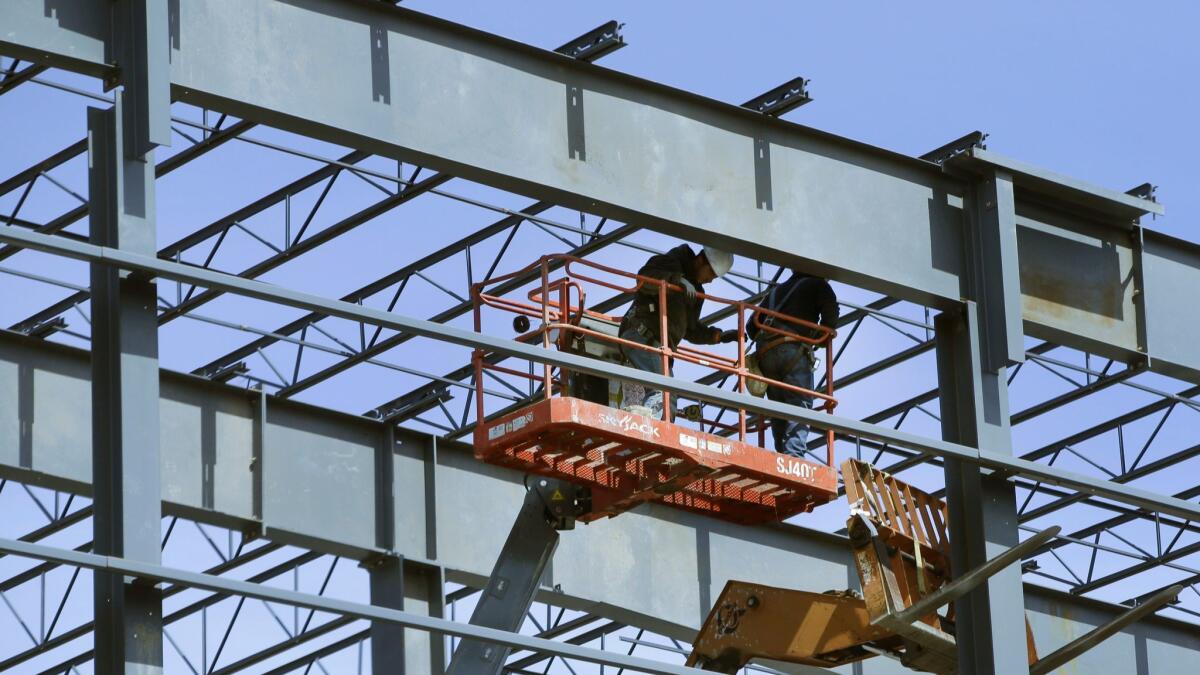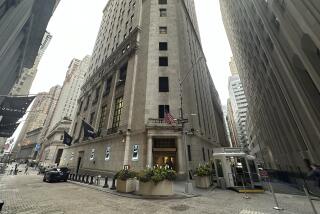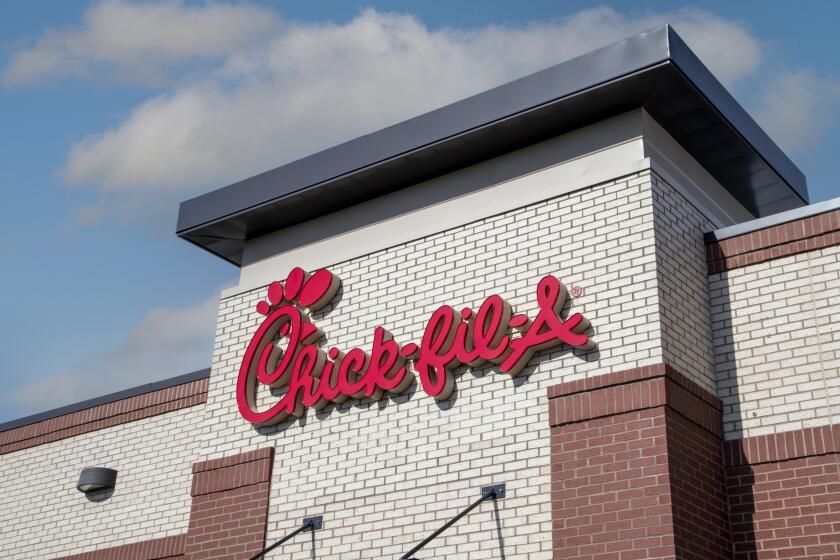U.S. unemployment falls below 4% for first time since 2000 — mostly for a bad reason

Reporting from WASHINGTON — The U.S. labor market improved somewhat last month, adding a solid 164,000 net jobs while the unemployment rate reached a new milestone, falling below 4% for the first time since 2000, the Labor Department said Friday.
But while job growth rebounded from a disappointing March figure that was revised up Friday to 135,000, other aspects of the closely watched monthly report were lackluster. And the drop in the unemployment rate was mostly for a bad reason: The labor force shrank for the second month in a row.
For the record:
9:35 a.m. May 4, 2018An earlier version of this article reported that the March job growth figure had been revised to 134,000. It was revised to 135,000.
Overall, the data show a labor market that remains resilient in the face of a potential global trade war but whose growth is slowing as the recovery from the Great Recession this month became the second-longest in U.S. history.
“This jobs report is truly a mixed bag,” said Mark Hamrick, senior economic analyst at financial information website Bankrate.com.
The April job gains were below analyst expectations of about 195,000. Still, with upward revisions of a total of 30,000 for February and March, job growth has averaged 200,000 a month this year — well above what’s needed to accommodate new entrants to the workforce.
The 3.9% unemployment rate in April set a new post-recession low. The rate hadn’t been below 4% since December 2000.
And the unemployment rates for blacks and Latinos last month — 6.6% and 4.8%, respectively — were at their lowest levels since the Labor Department began tracking the figures in the early 1970s.
President Trump touted the decline in the overall rate Friday.
“I thought the jobs report was very good. The big thing to me was cracking 4 [percent]. That hasn’t been done in a long time,” Trump told reporters before departing the White House for a speech in Texas. “We’re [at] full employment. We’re doing great.”
But the reason the unemployment rate dropped from 4.1% in March was largely because the labor force shrank by 236,000 people.
“That’s not good news,” said economist Douglas Holtz-Eakin, president of the conservative-leaning American Action Forum think tank. While he acknowledged there was symbolism in breaking 4%, Hotz-Eakin said it would be a positive development if the rate went down while the labor force was growing.
“It’s that horse race between jobs created and the [size of the] labor force, and we went the wrong way this time,” he said. Overall, he said he would grade the jobs report “a B in a world where we’d really like to see an A-plus.”
During the 2016 presidential campaign, Trump disparaged government reports of a falling unemployment rate as understating the condition of the jobs market because so many Americans were not in the labor force.
“Our real unemployment rate — in fact, I saw a chart the other day, our real unemployment — because you have 90 million people that aren’t working, 93 million to be exact, if you start adding it up, our real unemployment rate is 42%,” Trump told Time magazine in August 2016 when the Labor Department said the rate was 4.9%.
He was referring to a monthly statistic of working-age Americans who are not in the labor force. It was 94.3 million in August 2016. Last month it was 95.7 million, up about 410,000 from March.
But most of those people are retired — a figure that is growing as the baby boomer generation ages — or don’t work for reasons including being stay-at-home parents.
Economists scoffed at Trump’s inflated unemployment rate estimates during the campaign. The broadest measure of unemployment from the Labor Department, which includes people who are not in the labor force but want to work, has declined along with the overall unemployment rate from a high of 17.1% during the Great Recession
Last month, that measure — known as U-6 — dropped to 7.8%, the lowest since 2001.
Wage growth, which economists have said should pick up as the labor market tightens, slowed in April, a discouraging sign for workers.
Average hourly earnings increased 4 cents in April to $26.84 after a 6-cent increase in March. Still, annual wage growth held steady at 2.6% for the 12-month period that ended April 30.
Federal Reserve policymakers have been concerned that a faster rise in wages as employers face increasing competition for workers would lead to significantly higher inflation. But Friday’s data should ease those concerns for now and keep the Fed on track to continue to slowly raise its key short-term interest rate this year.
“The labor market is heating up with workers in short supply, but companies are still not paying up to bring in help despite one of the tightest labor markets in a generation,” said Chris Rupkey, chief financial economist at MUFG Union Bank in New York. “Fed officials can rest easy that there is not any wage-based inflation on the horizon and keep the economy on course with their projections for three rate hikes in 2018.”
UPDATES:
9:35 am.: This article was updated with additional context and with comments from President Trump, Douglas Holtz-Eakin and Chris Rupkey.
6:10 a.m.: This article was updated throughout with Times staff reporting.
This article was originally published at 5:30 a.m.
More to Read
Inside the business of entertainment
The Wide Shot brings you news, analysis and insights on everything from streaming wars to production — and what it all means for the future.
You may occasionally receive promotional content from the Los Angeles Times.











